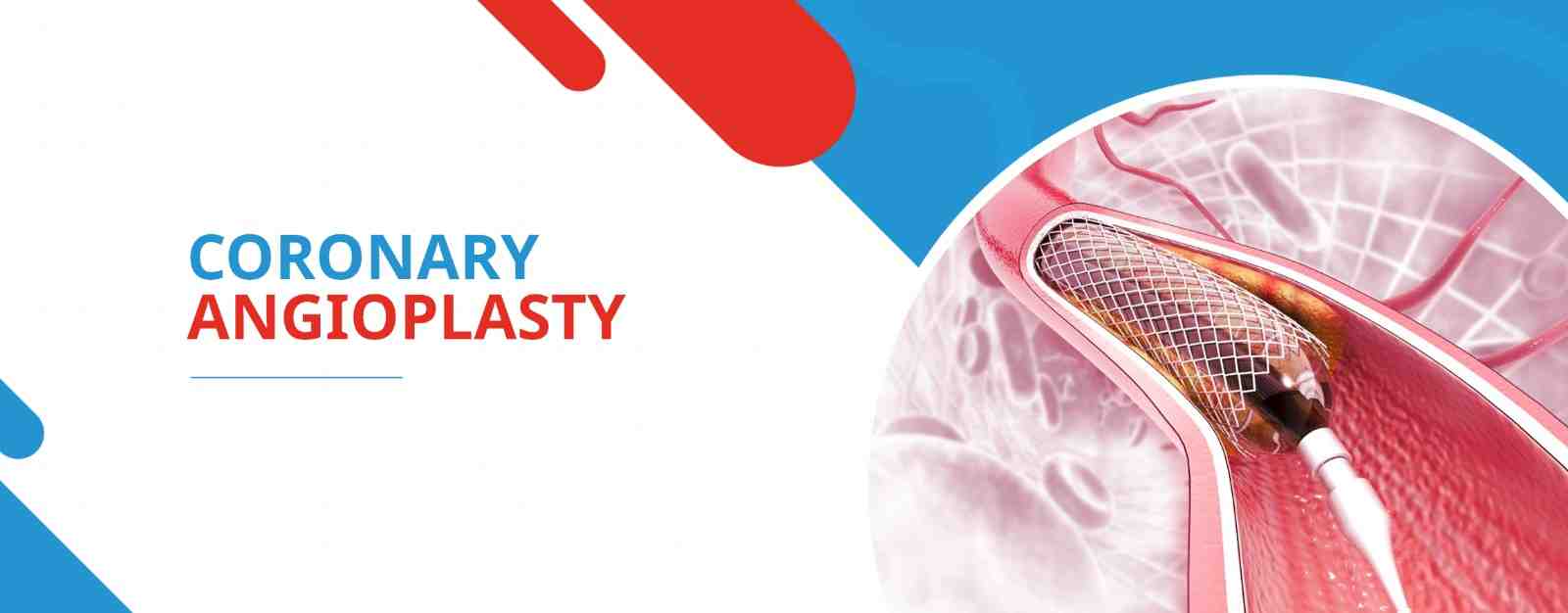
Coronary Angioplasty
Coronary Angioplasty, also known as Percutaneous Coronary Intervention (PCI), is a minimally invasive procedure used to treat coronary artery disease (CAD). CAD occurs when the blood vessels supplying the heart (coronary arteries) become narrowed or blocked due to a build-up of plaque. This narrowing restricts blood flow to the heart muscle, leading to chest pain (angina) or, in severe cases, a heart attack.
Coronary Angioplasty involves inserting a thin, flexible tube called a catheter into the blocked or narrowed coronary artery. The catheter is usually guided to the heart through a small incision made in the groin or wrist. Once in position, a small balloon attached to the catheter is inflated, compressing the plaque against the artery walls and widening the blood vessel. In some cases, a stent (a small mesh tube) is placed to help keep the artery open and prevent re-narrowing. Nowadays, in some cases drugs coated stent (a small mesh tube) is placed to help keep the artery open and prevent re-narrowing.
Why is Coronary Angioplasty performed?
Why is Coronary Angioplasty performed?
Coronary Angioplasty serves multiple purposes in the treatment of coronary artery disease:
- Relieve symptoms: By opening up narrowed or blocked arteries, blood flow to the heart muscle improves, alleviating chest pain (angina) and reducing the risk of a heart attack.
- Restore blood flow during a heart attack: In the event of a heart attack, immediate angioplasty can help restore blood flow to the heart, minimizing heart muscle damage and improving the chances of recovery.
- Improve quality of life: Angioplasty can significantly enhance a patient’s overall quality of life by reducing angina symptoms, increasing exercise tolerance, and improving heart function.
- Prevent future cardiac events: By addressing blockages in the coronary arteries, angioplasty helps reduce the risk of future heart attacks and other complications associated with coronary artery disease.
Coronary Angioplasty is a widely used and effective treatment for coronary artery disease. By opening up narrowed or blocked arteries, this procedure helps improve blood flow to the heart muscle, relieving angina symptoms and reducing the risk of heart attacks. It offers numerous benefits such as a quicker recovery, shorter hospital stays, and improved quality of life. However, like any medical procedure, it carries some risks, which should be carefully considered and discussed with your healthcare provider.
